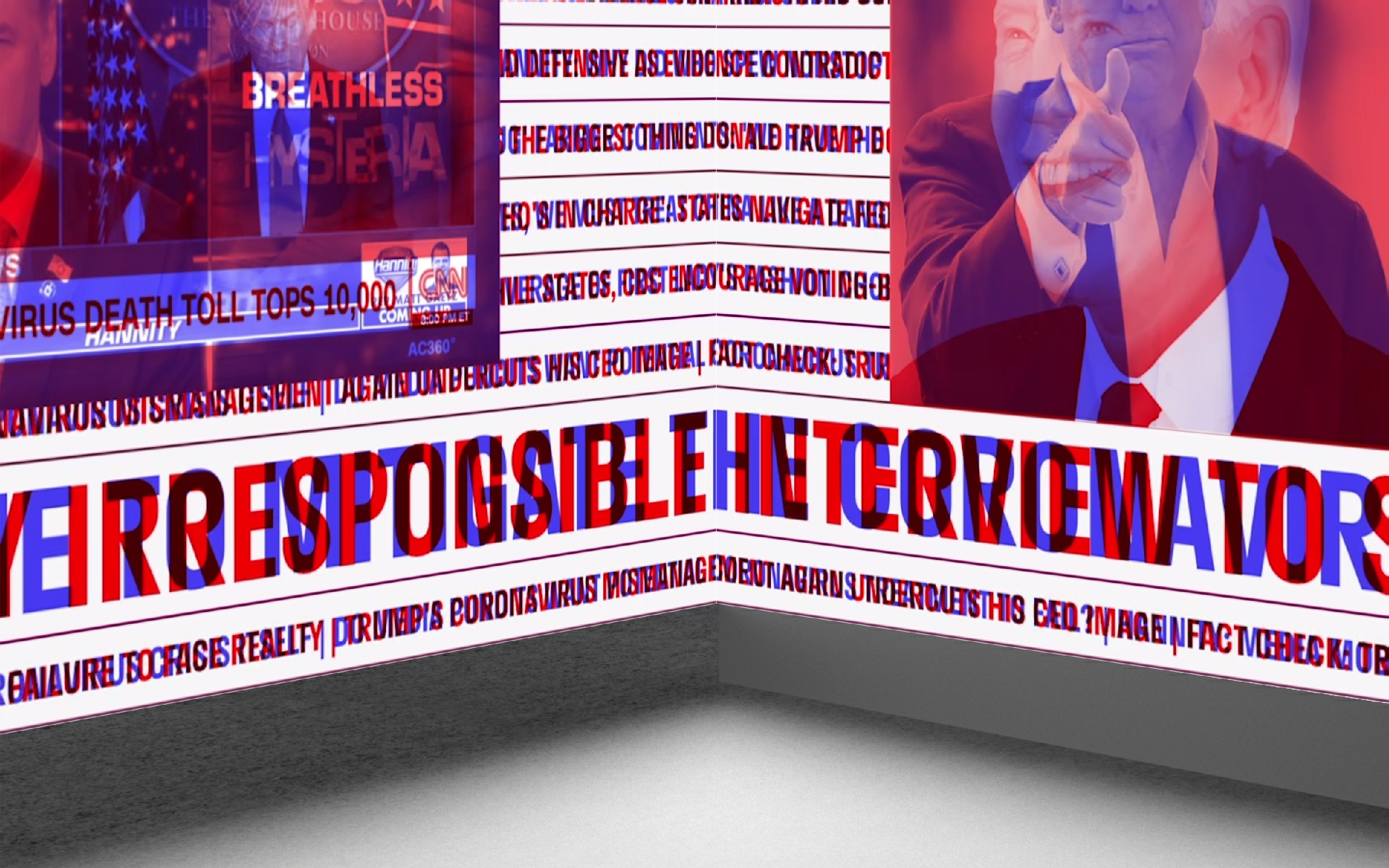
Polarised Reality
By Julian Schlicht
What is true, what is false, what is real, and who decides? This project is a visual exploration of surveillance capitalism and how it is undermining peoples autonomy and free will in an increasingly polarised digital society.
What we see, know, and believe to be true is based on calculations of our behaviour within surveillance capitalism. The reality we live in depends, to a large extent, on algorithms that can target us individually, steal our attention, harvest and analyse our personal data, and sell it as future predictions of our behaviour. This system favours anger and disagreement, which has shown to generate more engagement, and it is therefore in the Big Tech corporations interest to polarise peoples opinions and perspectives. The Polarised Reality Network exposes this parasitic system and demands an alternative mode of information delivery, that enhances peoples perception of reality, and reinforces their sense of autonomy in todays digital society.
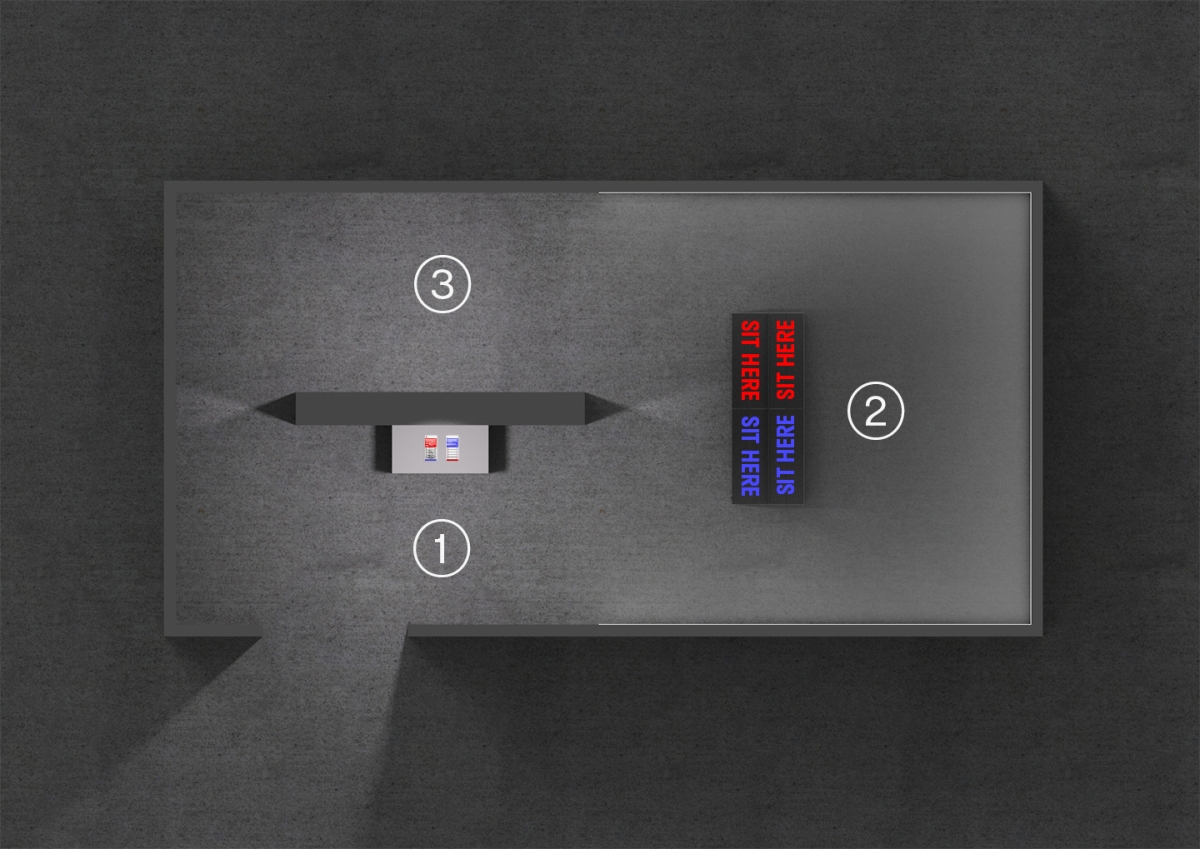
The Polarised Reality Network is a multi sensory news outlet that presents polarised interpretations of news items to its audience. In an enclosed room, the audience is viewing the news via an over-dimensional news feed that is projected against the walls around them. Depending on an algorithm, each visitor views the newsfeed through either a red or blue filter glass which determines their experience. While roaming the room, visitors may listen to one of two politically polarised radio programs, depending on their position in the room. Upon leaving the exhibition visitors are confronted with facts. Their experience is put into a context and a connection is made to the real world outside. Visitors might reflect on their experience in light of the facts and draw conclusions about their own behavior and the world they experience outside of the exhibition. The aim of this exhibition is that visitors are leaving with a critical view towards news media and how their own reality is constructed.
1. Section
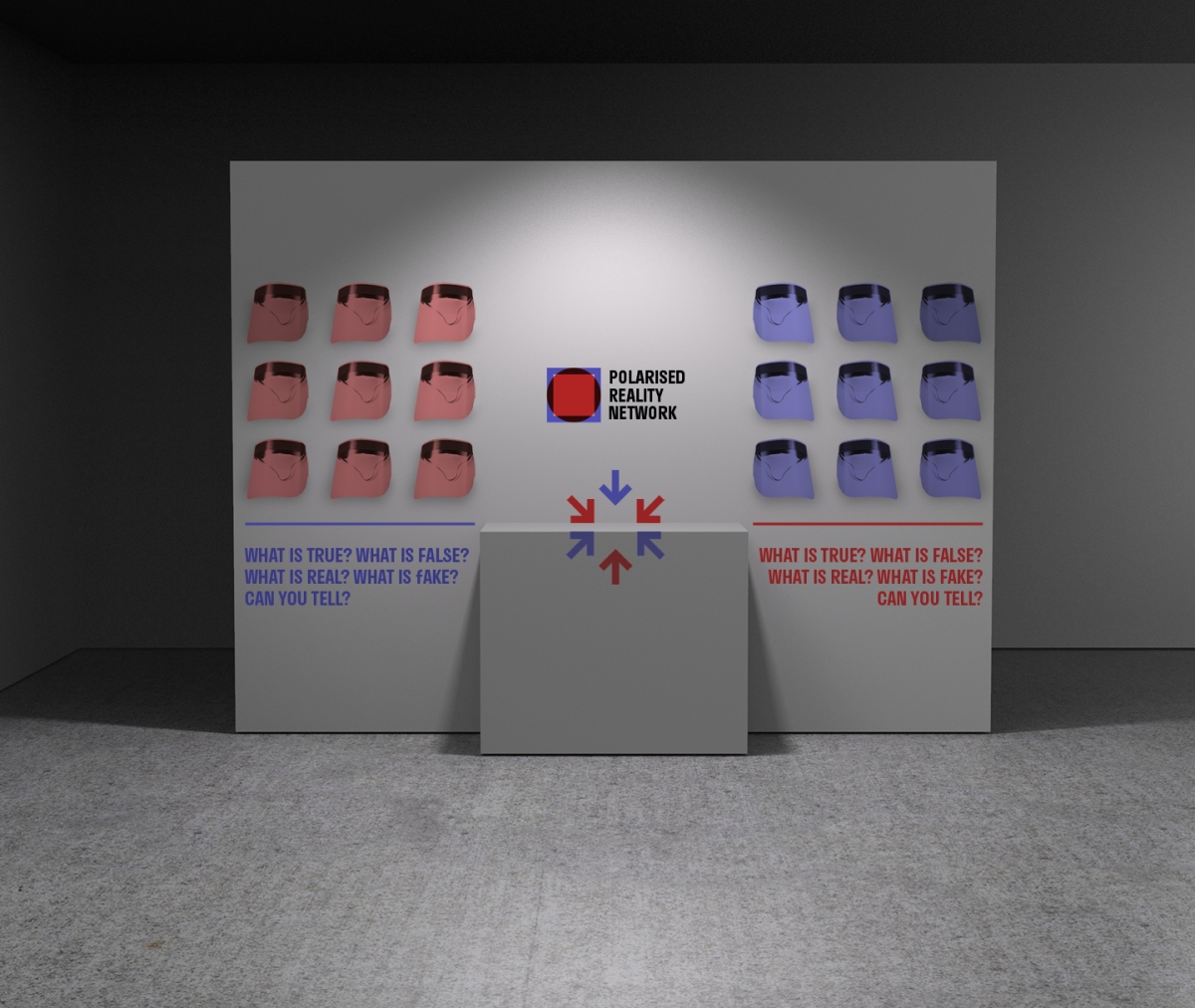
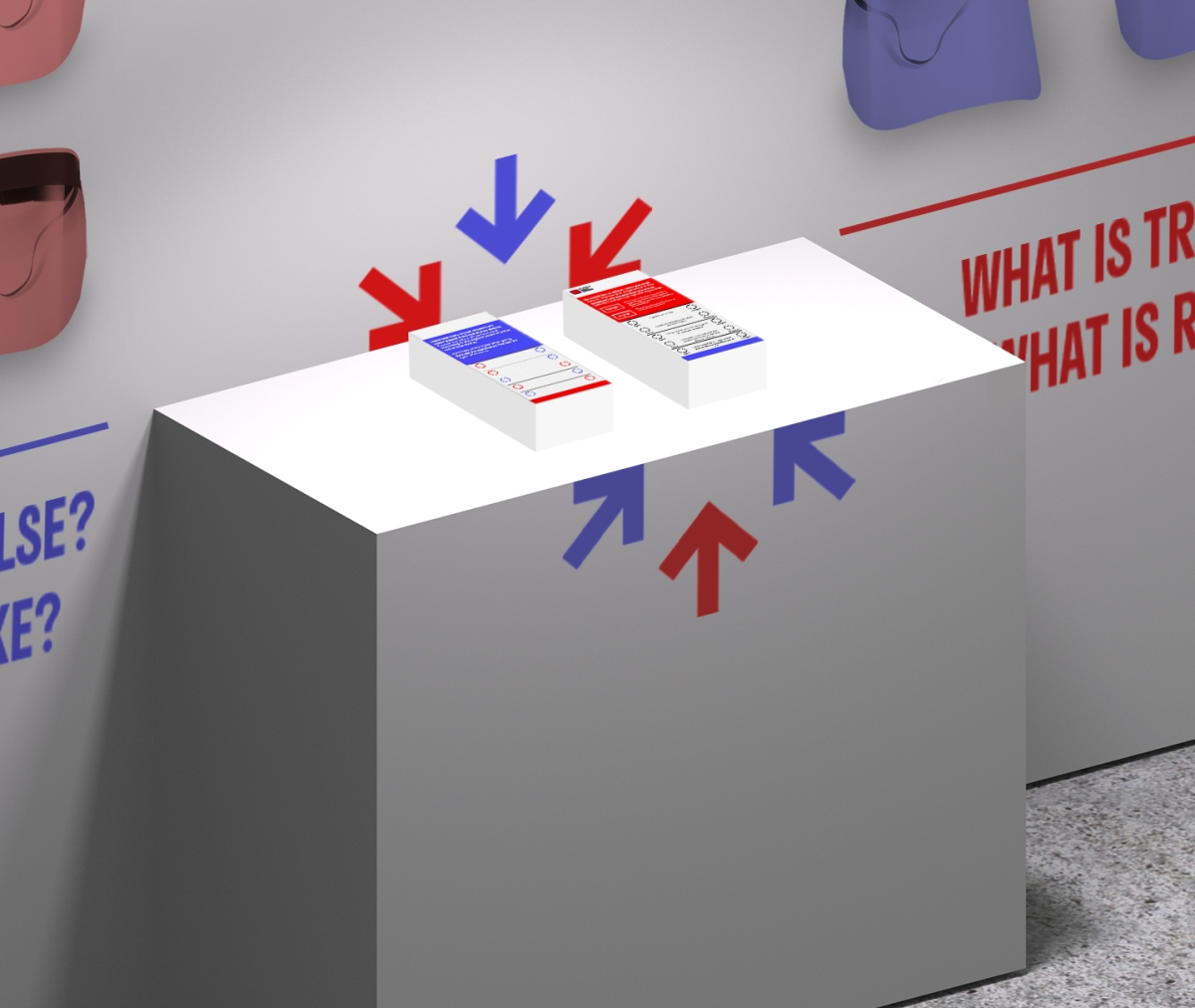
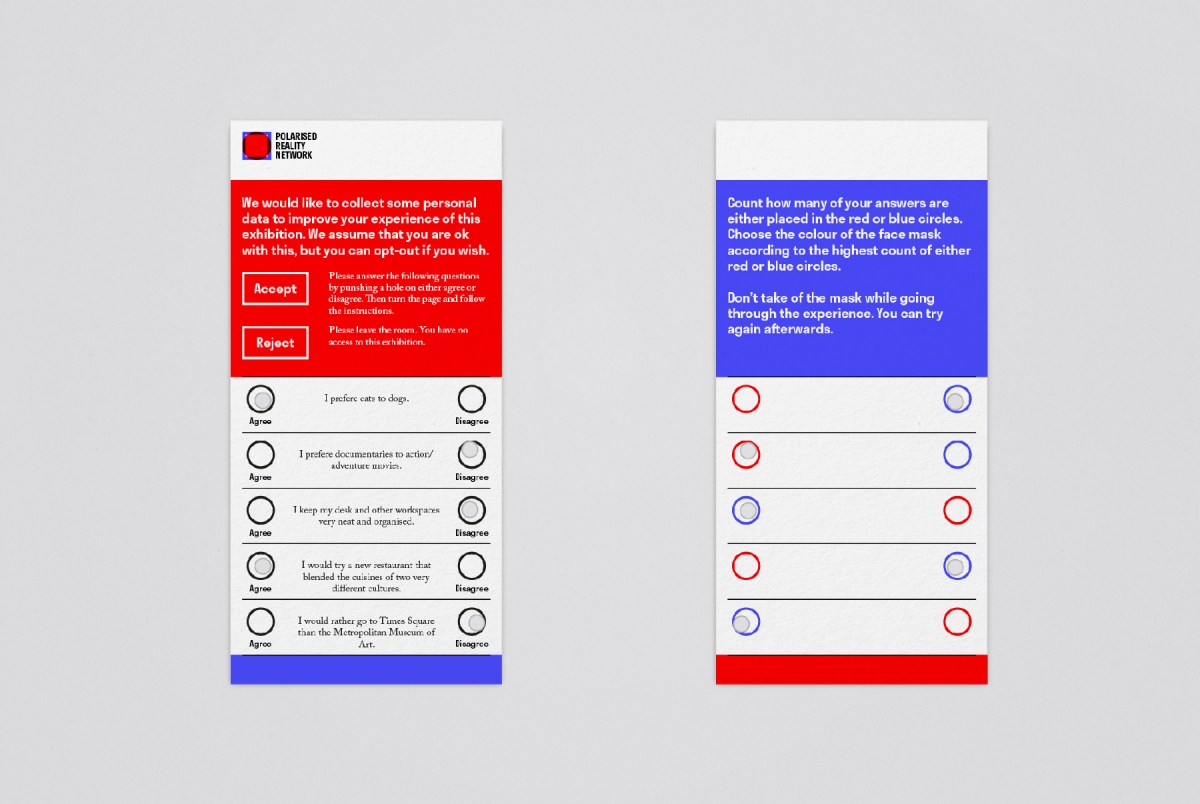
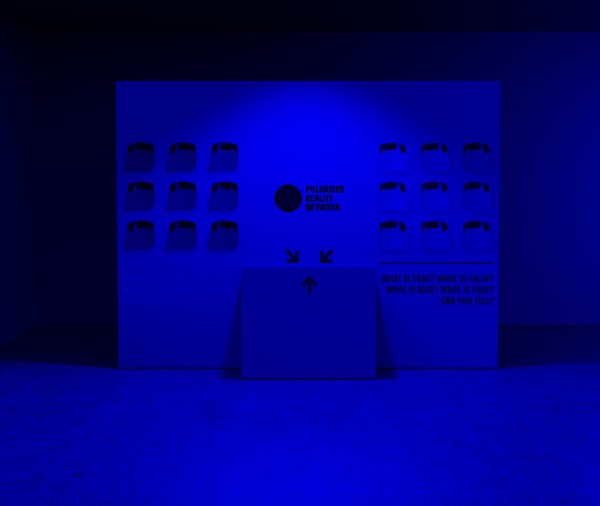
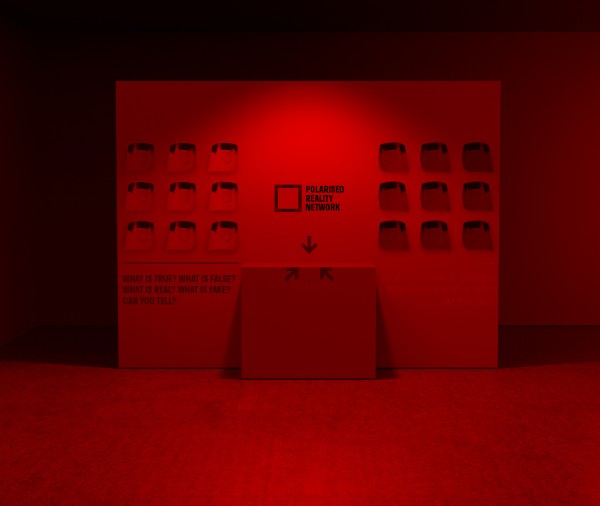

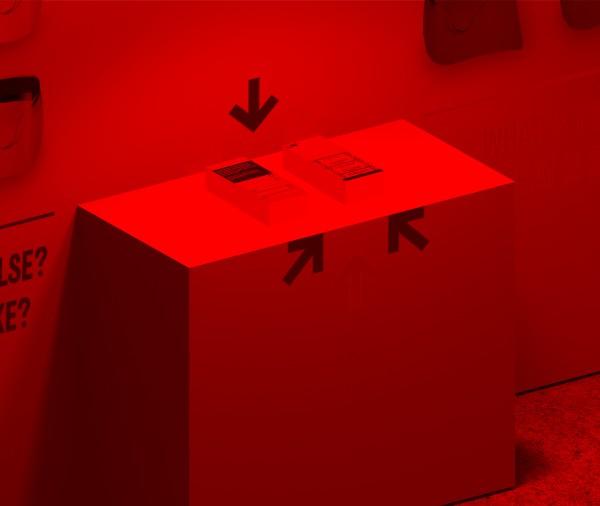
2. Section
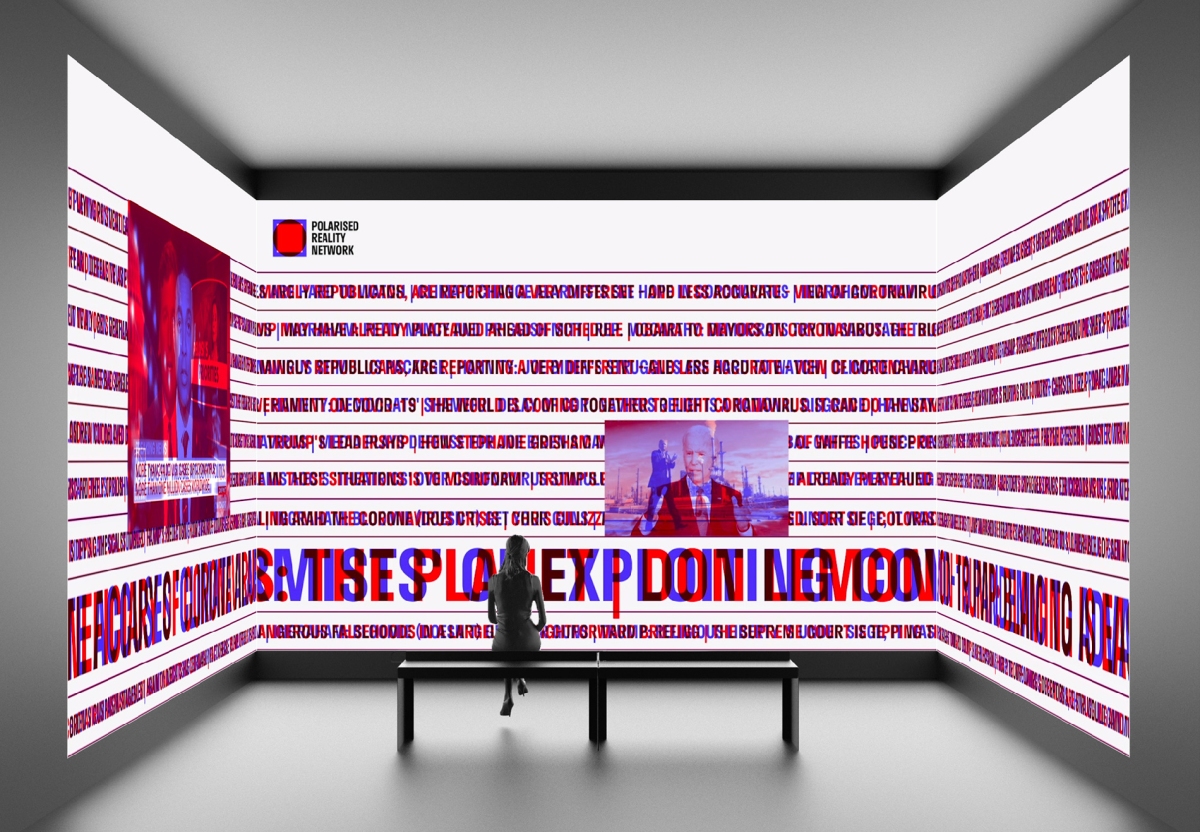
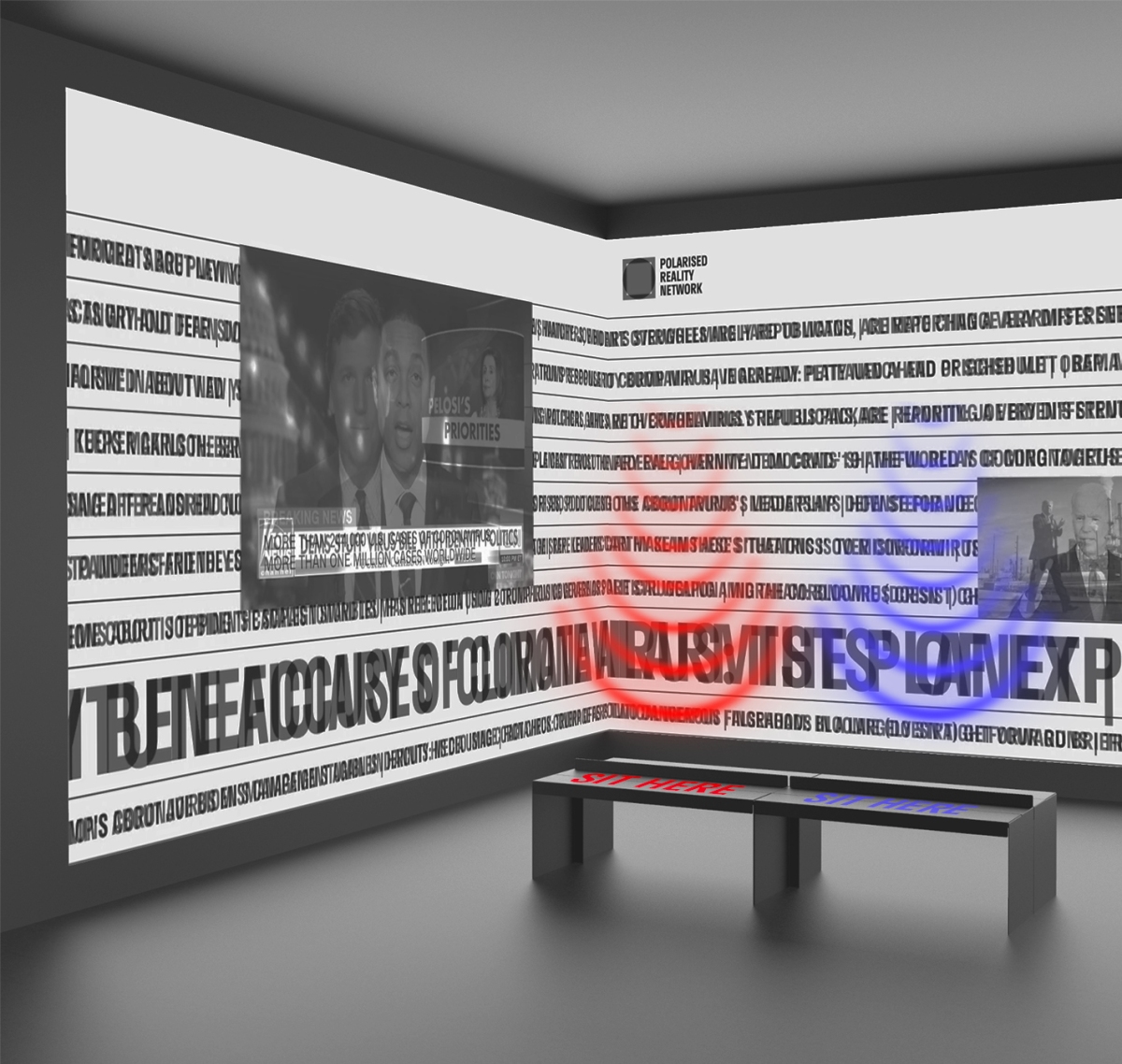
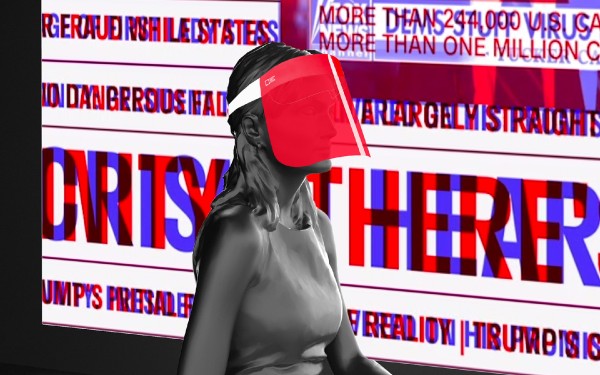
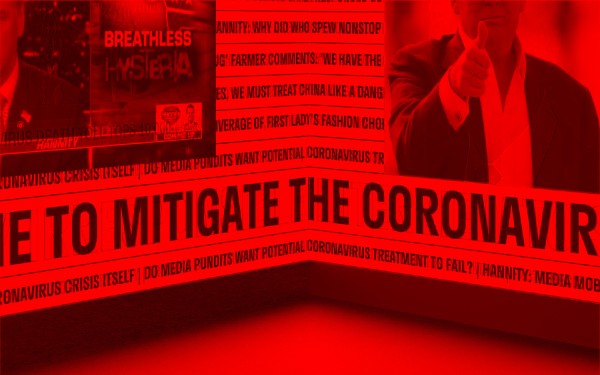
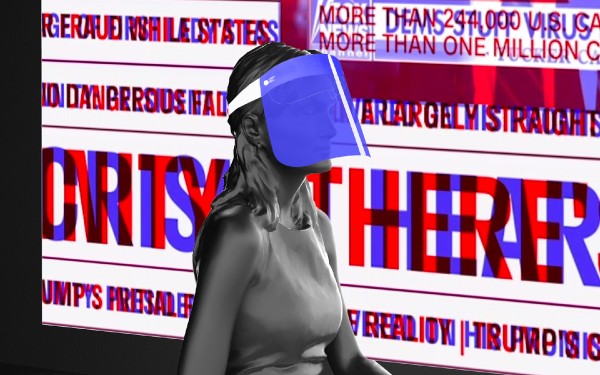
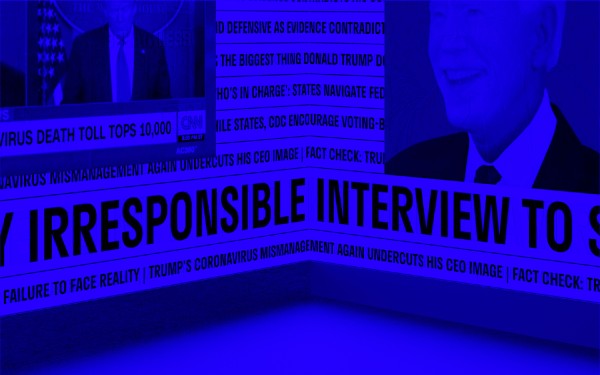
3. Section
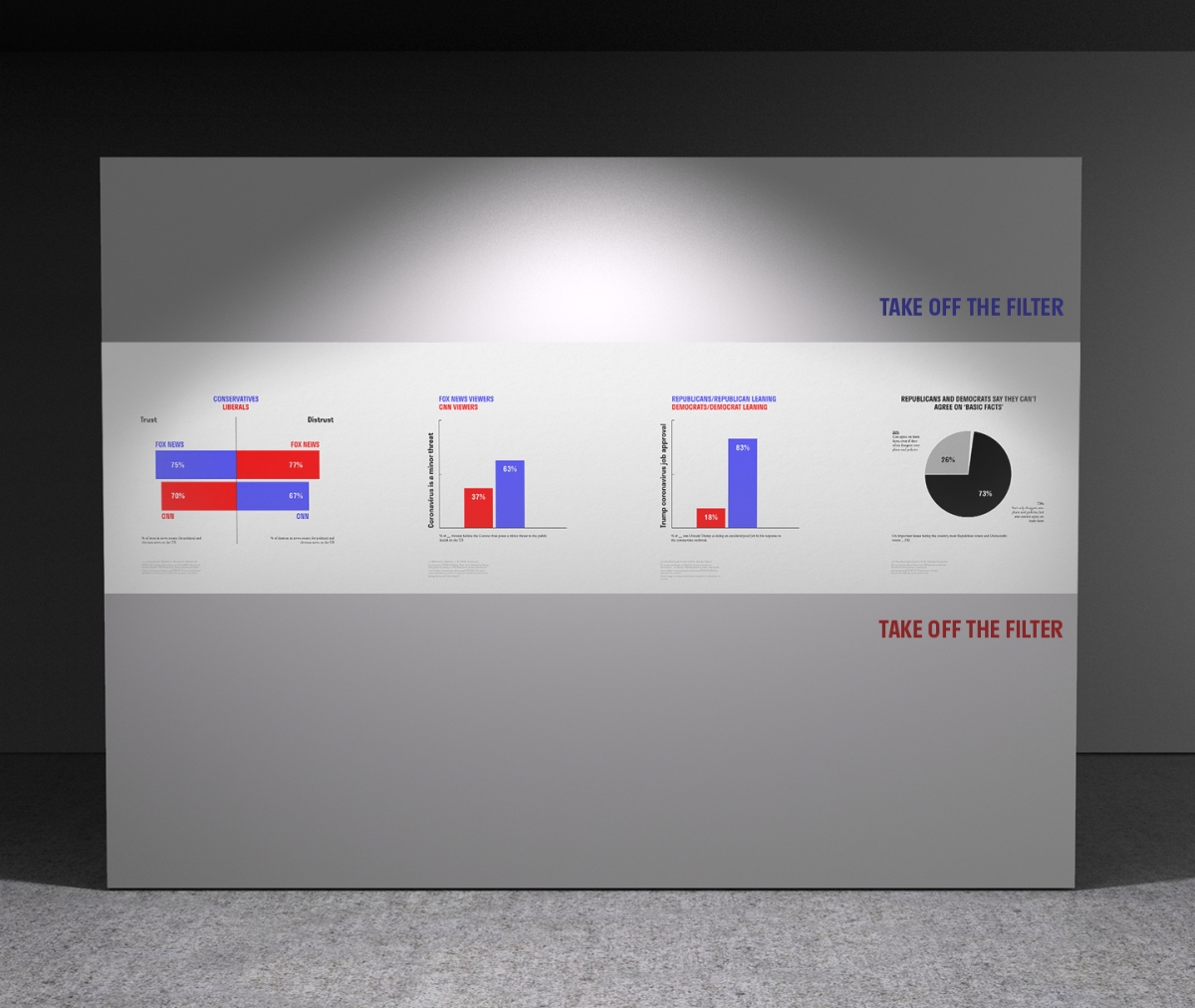
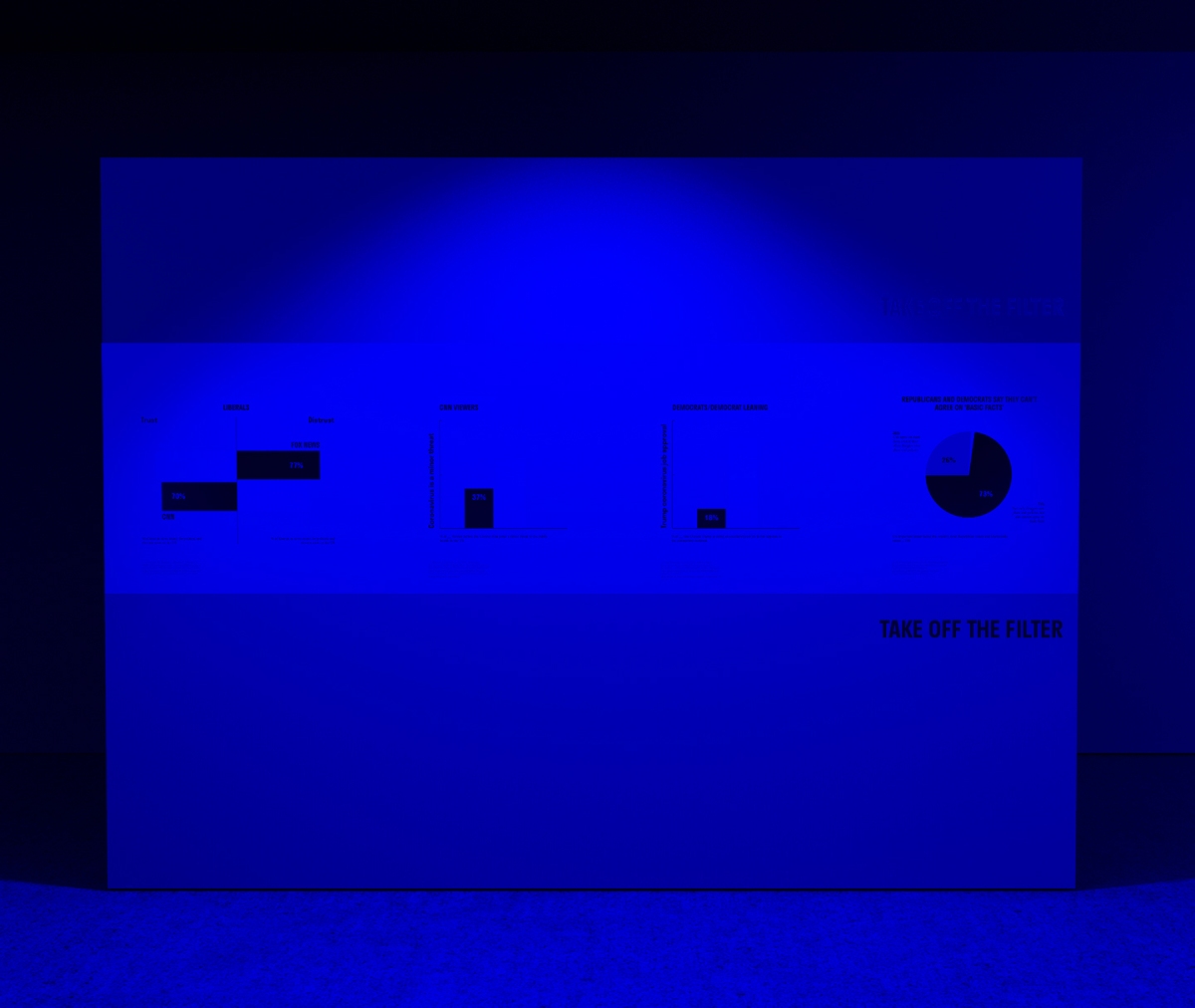


My aim with this project was not to find a solution for the problem of polarisation and loss of autonomy in todays digital society. I believe that general solutions proposed out of the often misinterpreted position of designers as enablers, embellishers or accelerators of the current capitalistic system have often caused more harm than good. Instead I want to use visual communication to create an immersive experience that raises awareness about the problem, makes visible, and conveys knowledge to an audience that in turn can initiate change through their own professional fields or by implying pressure on legislators. I rather aim to enhance peoples perception of the world instead of providing them with a new tool that solves their problems.
Polarised Reality is a room for reflection; on ones own consumption of the news as well as the general nature of todays news which is embedded in a competitive market for our attention within surveillance capitalism. I want to invite the audience to reflect that there are different view points to one news story and that each individual might themselves be stuck in a certain filter or news bubble. Derived from that I want the audience to realise that the content they engage with online, might in fact be increasingly personalised and not congruent with the content others are reading about the same issue.
Process
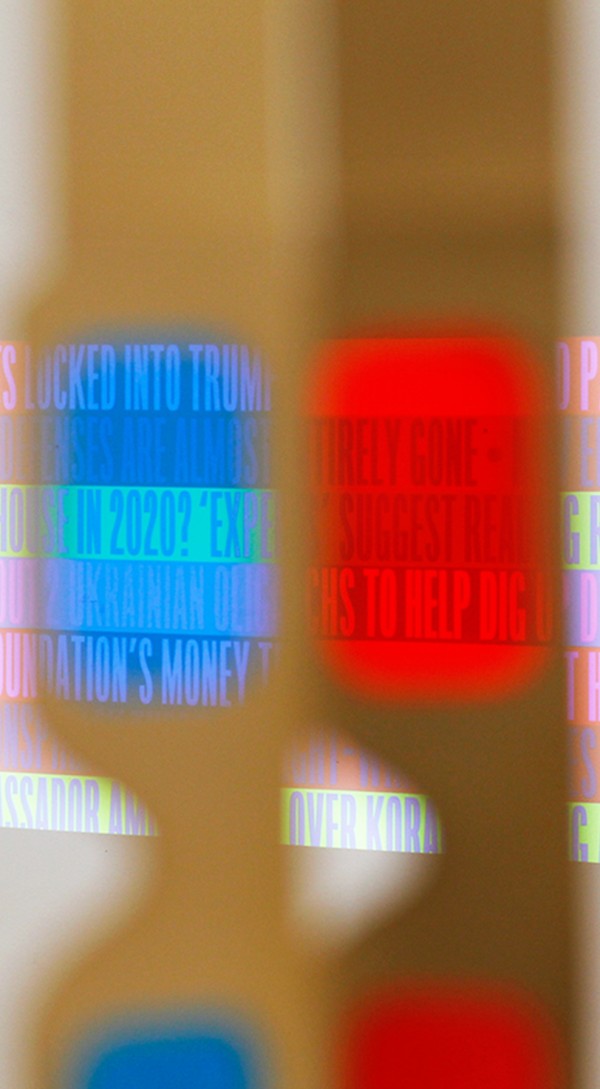
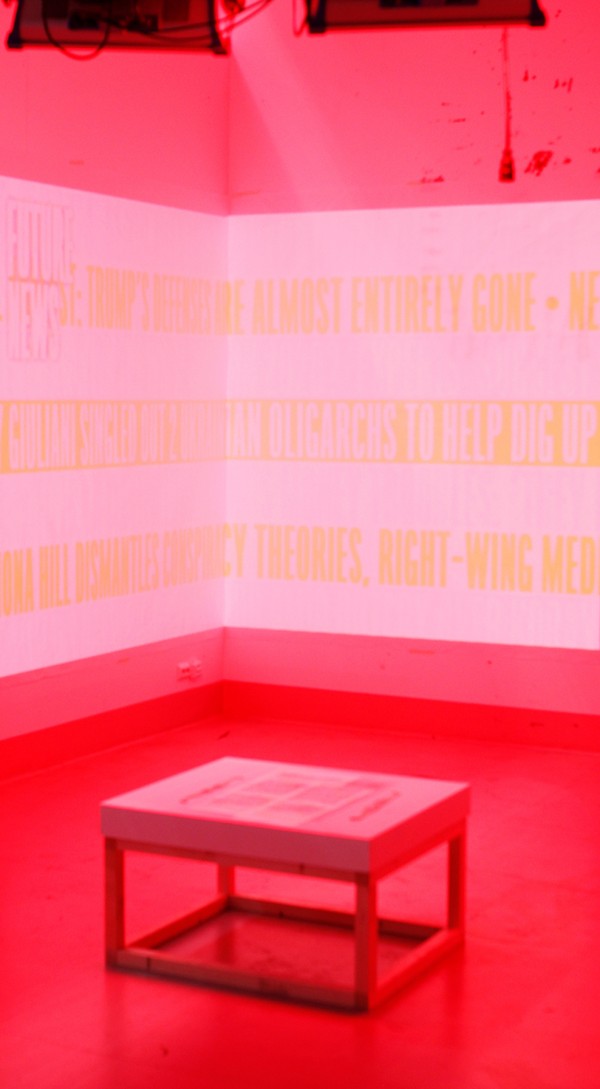
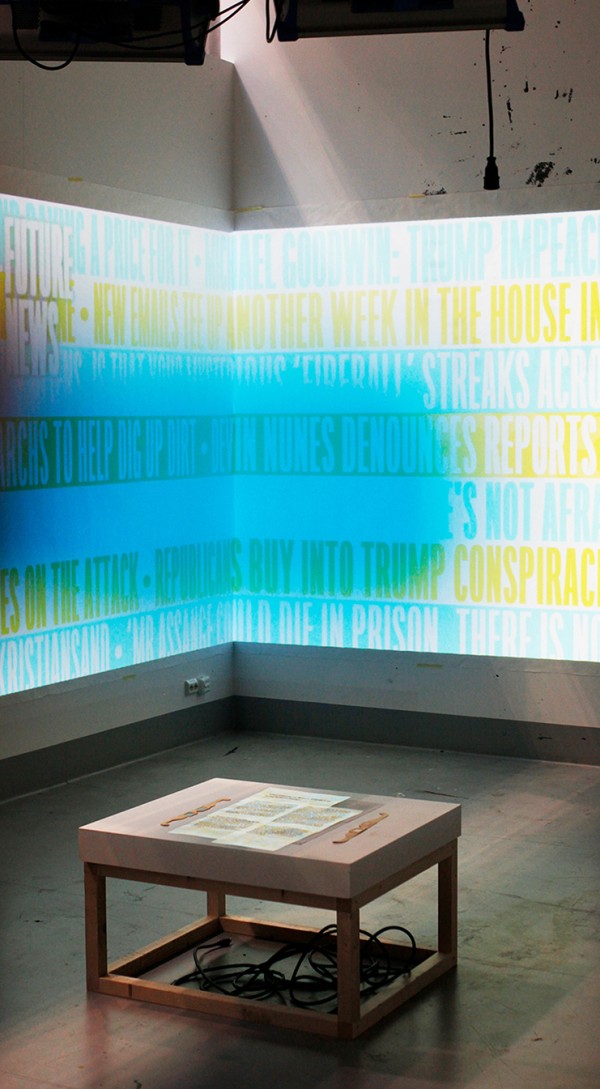
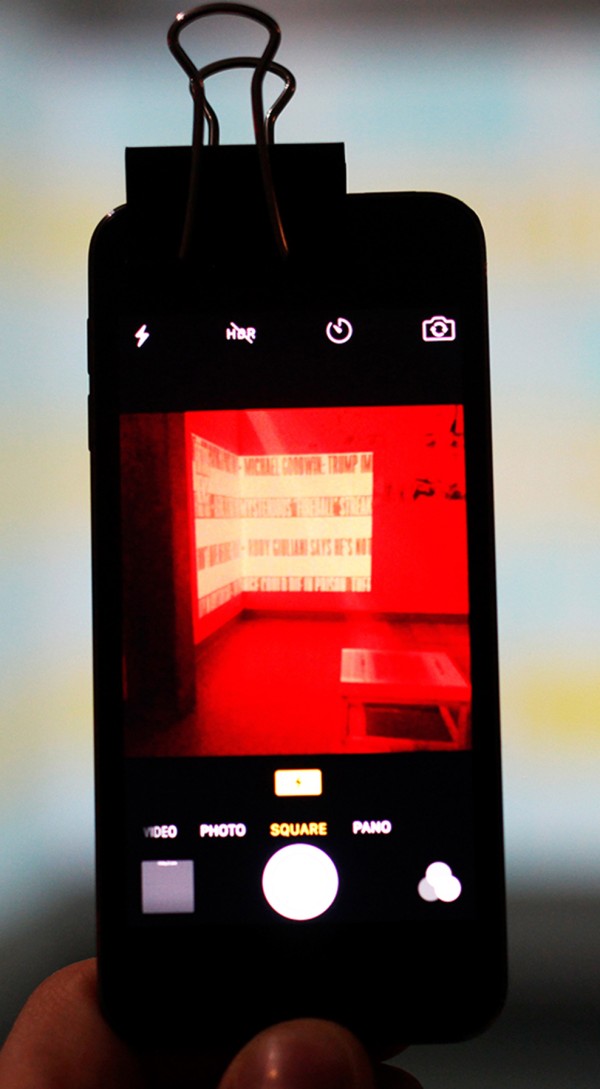

Julian Schlicht (DE)
Julian Schlicht is a socially aware and critical designer with a multidisciplinary background. Enjoying theoretical academic and practical artistic education within the fields of media, communication, and design has sharpened his understanding of the discipline of visual communication. His approach is grounded in research and designerly insight, as well as experimentation and use of creative methodology. Julian acknowledges the discipline’s great social and ecological responsibility as he believes that design will determine our future products, systems, societies and ways of living. He has dedicated his MA studies in design, at the University of Bergen, exploring the role of design within surveillance capitalism.